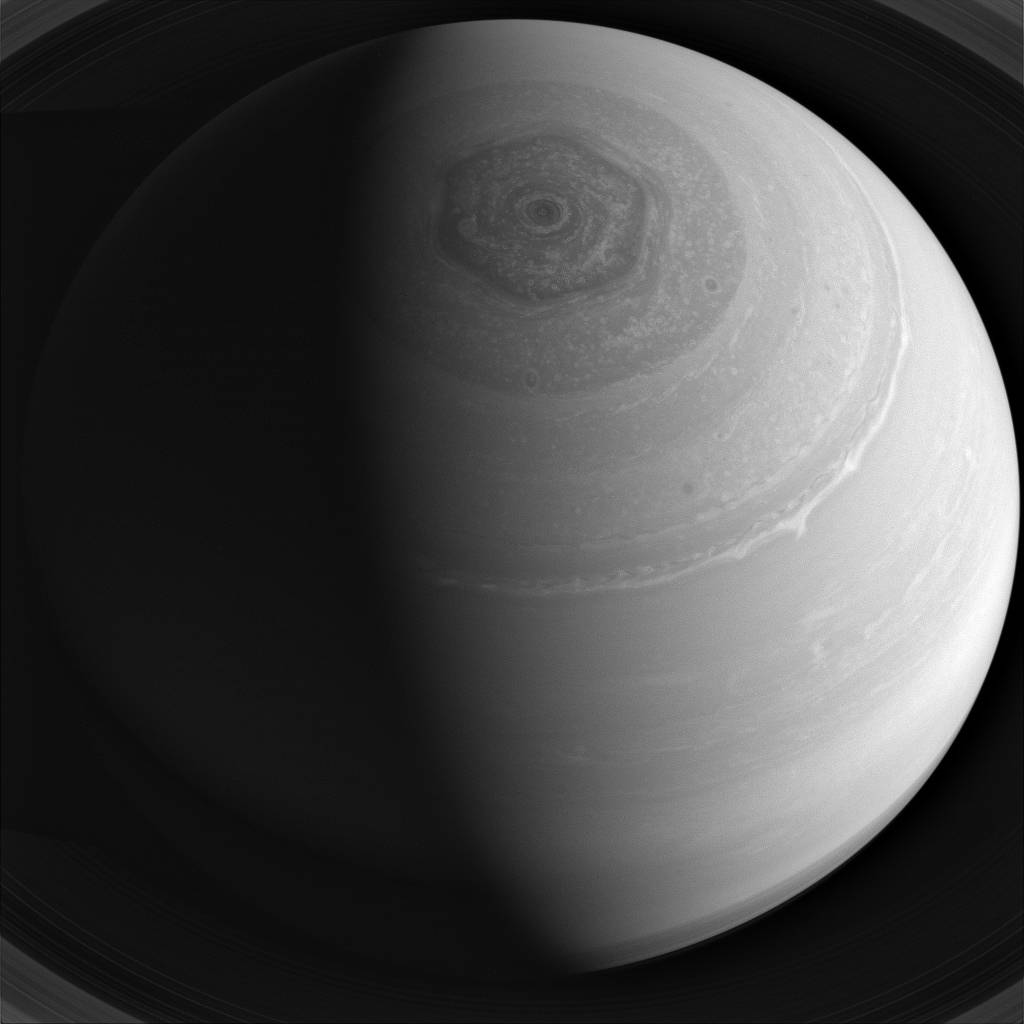
Saturn’s winds race furiously around the planet, blowing at speeds in excess of 600 miles (1,000 kilometers) per hour at the equator. As they do so, they form distinct bands and zones which encircle the planet’s pole, as well as its famous hexagon. These zonal winds spin off swirls and eddies, which are significant storms in their own right.
This view looks toward the sunlit side of the rings from about 51 degrees above the ringplane. The image was taken with the Cassini spacecraft wide-angle camera on Dec. 27, 2013 using a spectral filter which preferentially admits wavelengths of near-infrared light centered at 752 nanometers.
The view was acquired at a distance of approximately 1.3 million miles (2 million kilometers) from Saturn. Image scale is 75 miles (120 kilometers) per pixel.
The Cassini-Huygens mission is a cooperative project of NASA, the European Space Agency and the Italian Space Agency. The Jet Propulsion Laboratory, a division of the California Institute of Technology in Pasadena, manages the mission for NASA’s Science Mission Directorate, Washington, D.C. The Cassini orbiter and its two onboard cameras were designed, developed and assembled at JPL. The imaging operations center is based at the Space Science Institute in Boulder, Colo.
For more information about the Cassini-Huygens mission visit https://www.nasa.gov/cassini and http://saturn.jpl.nasa.gov. The Cassini imaging team homepage is at http://ciclops.org.
Credit: NASA/JPL-Caltech/Space Science Institute


























